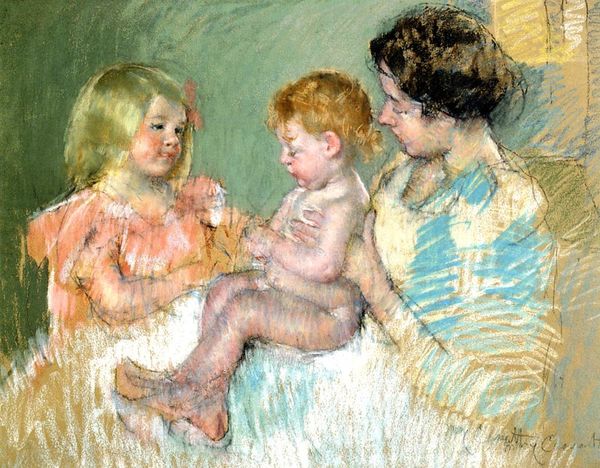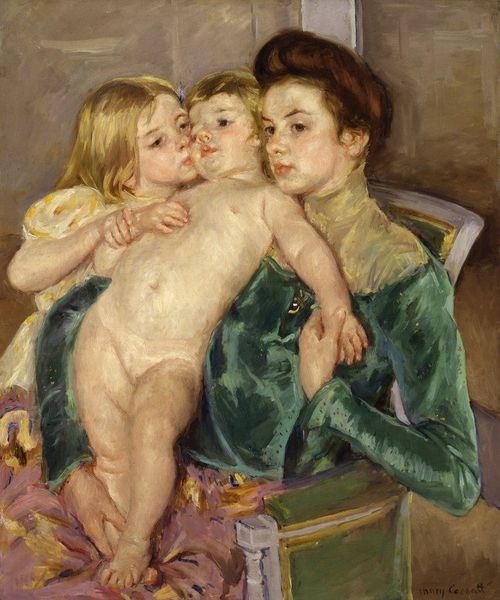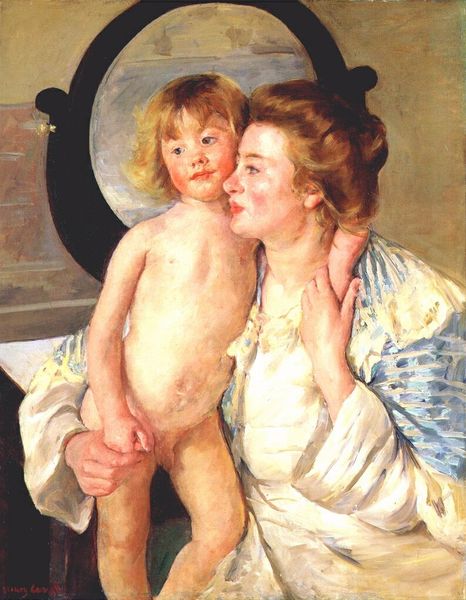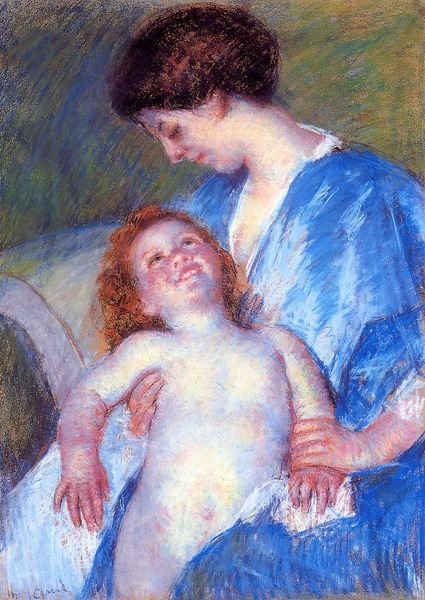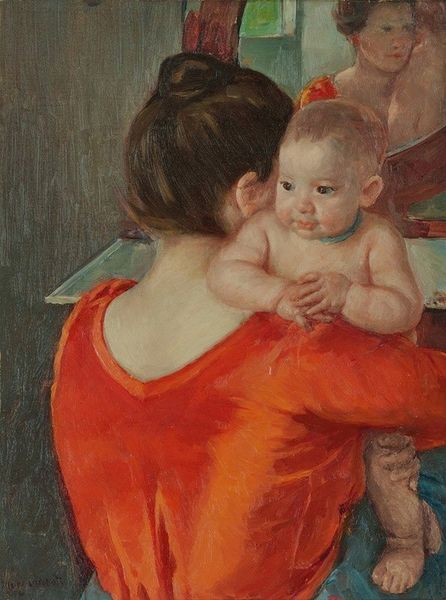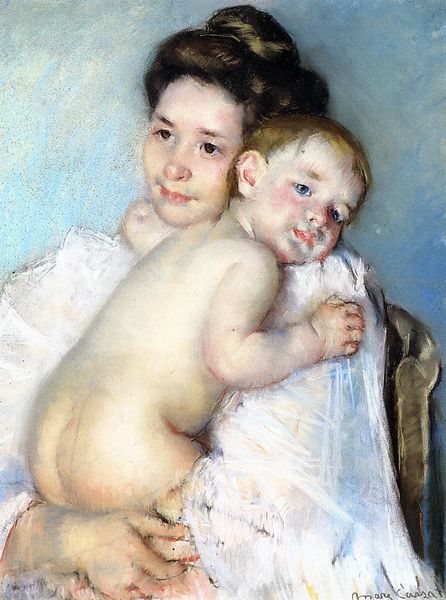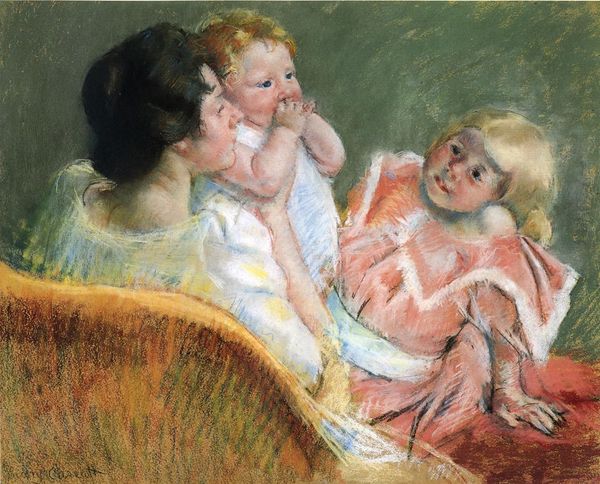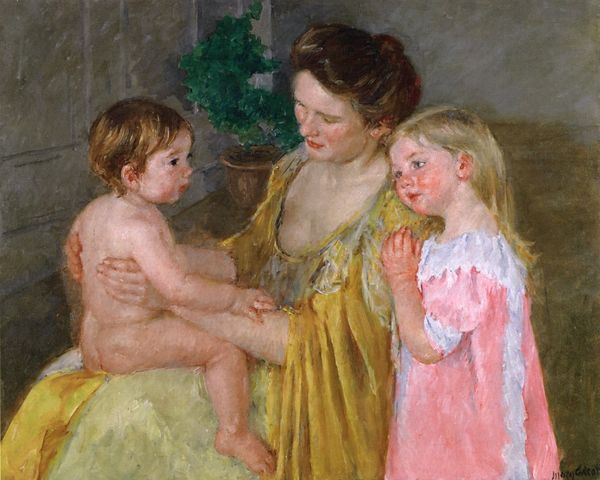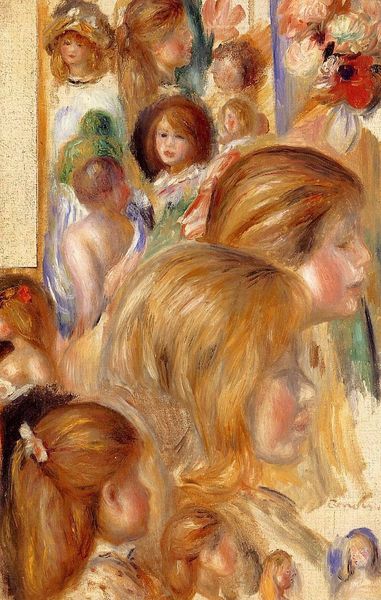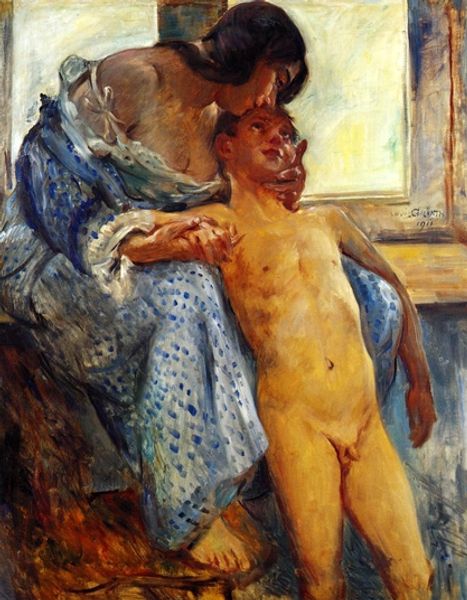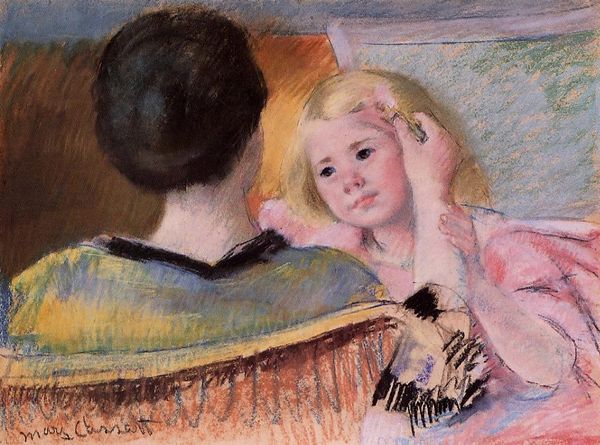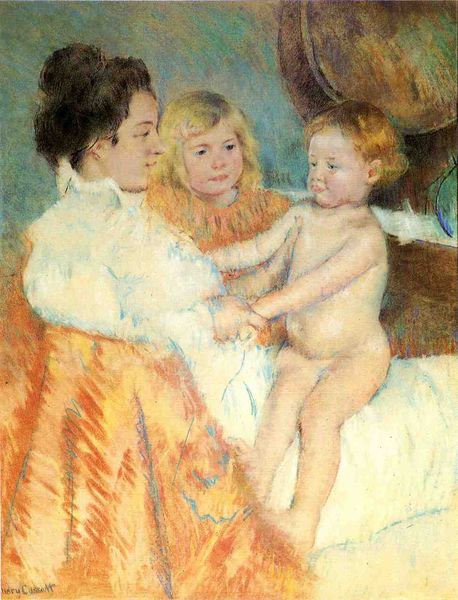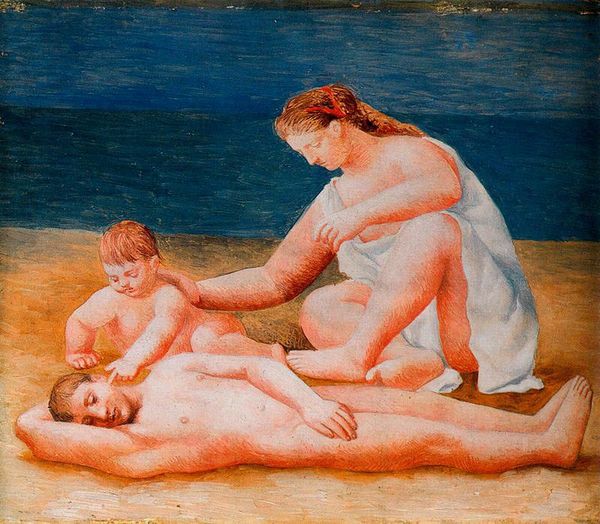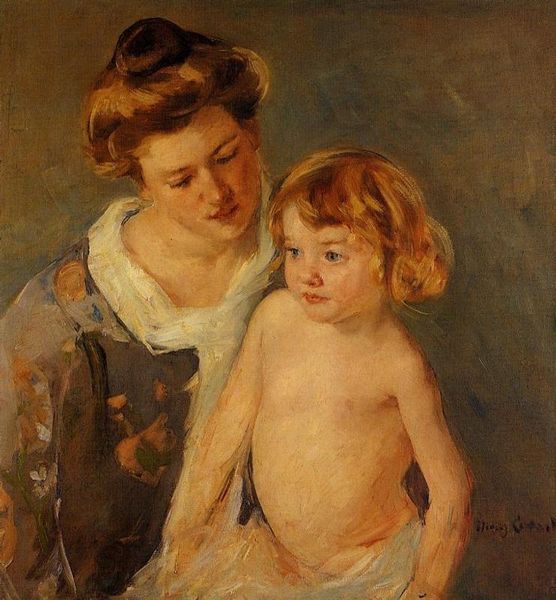
Copyright: Public domain
Curator: Ah, "Sara Handing a Toy to the Baby," painted by Mary Cassatt in 1901. The oil-on-canvas piece now resides at the Hill-Stead Museum. What's your first take? Editor: There’s something incredibly gentle in the light here. The tones are warm, yet there is also a sense of fleeting intimacy and perhaps an evocation of societal norms in that era about the expectation of girlhood. Curator: Absolutely, it's bathed in that Impressionistic glow she was known for, capturing those everyday, private moments. You know, Cassatt often depicted mothers and children, elevating those quiet interactions. It is though the scene is taken out of time, and has a deeply dream-like sensibility. Editor: Which is precisely why those depictions have stirred conversation. They represent the limited scope of women's accepted activities during the late 19th and early 20th centuries but also offered what was almost a radical depiction of domesticity. What Cassatt captures on canvas reveals social limitations and the ways women created their own space within them. I see that tension reflected here, what do you make of the compositional choices? Curator: The arrangement is lovely; how she positions Sara slightly above and beside the baby creates a gentle connection, a diagonal pull that centers their relationship without sentimentality. It’s interesting – I’m drawn in to observe the sweetness, but there’s this slight, unspoken melancholy hanging about it all. Cassatt doesn't make anything too saccharine. Editor: Agreed. And it’s essential to acknowledge that those moments, though beautifully rendered, occurred within a structure of female constraint and expectation, a world dictated and managed largely by men. The gift from sister to sibling becomes not just an act of childhood innocence, but speaks about familial and gendered roles, which is the lens I bring into my seeing, in my efforts to situate such works in dialogue with social conditions of production. Curator: Absolutely; Cassatt gives it all such careful thought. Thank you, because your interpretation of historical and socio-political nuances make this scene richer and deeper in feeling, almost as if all women were complicit in repeating social tropes! It makes me want to know what was truly going on in her heart. Editor: These dialogues – where art meets activism and individual expression collides with socio-historical narratives – that's what make studying the art, well, *artful*.
Comments
No comments
Be the first to comment and join the conversation on the ultimate creative platform.
